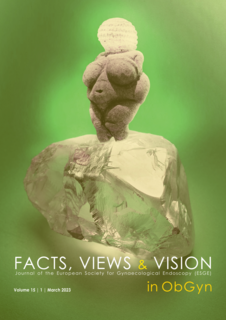Eyes, menstruation and endometriosis
Haemolacria, vicarious menstruation, ocular endometriosis, bleeding, tears, oestrogen
Published online: Jun 30 2023
Abstract
Vicarious menstruation refers to cyclical bleeding outside the uterine cavity during the menstrual cycle. Haemolacria, or blood in tears, is a rare medical phenomenon that can occur with menstruation or in association with endometriosis. Endometriosis, defined by the presence of endometrial-like tissue in extra-uterine sites, affects around 10% of fertile women; the ocular system is one of the rarest sites it can be present in. Endometriosis usually requires a biopsy for diagnosis, and the anatomic difficulty of obtaining a biopsy of the ocular system makes ocular endometriosis diagnosis more obscure. However, few cases have been described in the literature and due to the psychological, physical, and social implications of haemolacria on the patient, treatment is of utmost importance. We reviewed the literature on ocular endometriosis and ocular vicarious menstruation with the aim to discuss the clinical presentation, necessary workup and various treatment modalities, while also shedding light on the connection between the eyes and endometriosis in general. It is hypothesised that uterine endometrial cells can travel lymphatically or haematogenously and deposit extra-uterine endometriotic lesions that bleed in response to hormonal changes in the menstrual cycle. Additionally, the conjunctival vasculature has been found to be responsive to hormonal changes due to the presence of oestrogen and progesterone receptors, causing bleeding at the corresponding sites, even without endometriotic lesions. Clinical correlation of the haemolacria with the menstrual cycle can suffice for a diagnosis of vicarious menstruation, and thus opens the possibility of treatment to provide symptomatic treatment for the patient.



